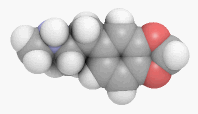Matt Melema finds that evangelicals are starting to come around on marijuana:
No one has done a poll of where evangelicals in particular stand on pot, but talking to a dozen or so of them makes me think that the feelings of young evangelicals are shifting as fast as many others of their generation. Given the history of churches decrying marijuana as a “demon weed” which could threaten society, the new attitude represents a generational divide.
 And, increasingly, churches and leading Christian groups aren’t trying to stop this. In the 2006 election, Focus on the Family, then led by culture war veteran James Dobson, was a major force in the anti-marijuana campaign, making large donations and publicly opposing it. By 2012, the younger Jim Daly had replaced Dobson, and Focus mostly stood to the side during the election, contributing a mere $25,000.
And, increasingly, churches and leading Christian groups aren’t trying to stop this. In the 2006 election, Focus on the Family, then led by culture war veteran James Dobson, was a major force in the anti-marijuana campaign, making large donations and publicly opposing it. By 2012, the younger Jim Daly had replaced Dobson, and Focus mostly stood to the side during the election, contributing a mere $25,000.
Daly has started building relationships with everyone from progressive newspapers to gay activists to Bono. This new approach is reflected in his attitude toward marijuana. He is against legalizing recreational marijuana. But he may be more open toward medical marijuana, remarking that there could be “some medical benefits derived from it.”
What I found most striking in the piece was this from a profile of the Stanleys in OnFaith:
“Satan didn’t create this plant,” says Jesse [Stanley]. “Satan doesn’t create anything. This is God’s plant. And God is moving in the hearts of men and women and children around the world about this plant in ways that I never would’ve imagined five years ago.”
What Stanley is referring to is the potential of the plant to alleviate pain and suffering in ways no prescription drug can. And I do think that the experience of medical marijuana has shifted this debate perhaps more deeply than we truly understand. If you have watched marijuana keep another human being alive and nourished in the worst throes of AIDS, as I have, and then watched them get their life back, it changes you. If you have ever met a child with seizures who, thanks to this plant, can begin to construct a calmer, saner life, it will affect you deeply. To call a plant that can do this a “demon weed” simply becomes nonsensical.
But what’s interesting is how this discovery also leads inexorably to a different approach to responsible, recreational marijuana use.
There is a reason the plant has, throughout the aeons of human history, been related to religion and spirituality. There’s a reason that it’s a sacrament in Rastafarianism. Countless people testify to spiritual insights, intellectual breakthroughs and emotional healing through use of the plant. For many, it works on the human brain very differently than alcohol. For some, it allows for calmer thought, or a heightened aesthetic sense, or just relief from the ordeal of consciousness that speaks to the soul more deeply than many other drugs, barring, of course, other psychotropic, like psilocybin or Ketamine. Of course, this is not a substitute for prayer, or meditation, or doctrine. But it can jog people toward a deeper appreciation of the world, its beauty and its goodness. It acts as a cultural check on the frantic, over-sharing, constantly-updating, overwhelmed life so many of us now share. It has a religious and spiritual aspect that cannot be denied – even as it has been smothered by Cheech and Chong and Seth Rogen (peace be upon him).
It will indeed be a marvel if members of organized religion begin to shift their attitudes to this drug. But, the more you think about it, it shouldn’t surprise. We may well be under-estimating the cultural impact of widespread and legal marijuana use. The human mind is a beautiful thing. And when it unfolds a little, a little more may be possible for the enrichment of our lives
The abstinence rate for study participants was 80 percent after six months, much higher than typical success rates in smoking cessation trials, says Matthew W. Johnson, an associate professor of psychiatry and behavioral sciences at the Johns Hopkins University School of Medicine, and the corresponding author on the study.




